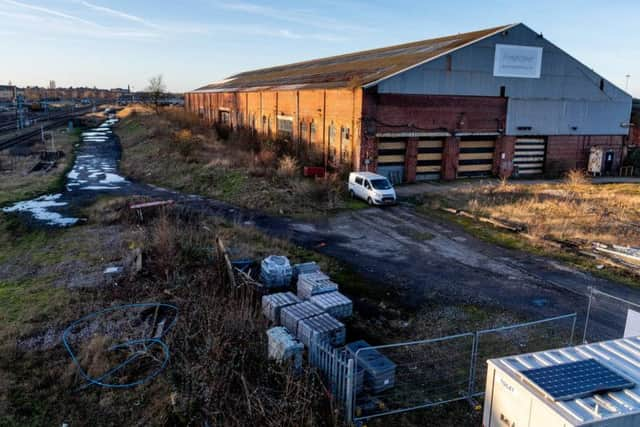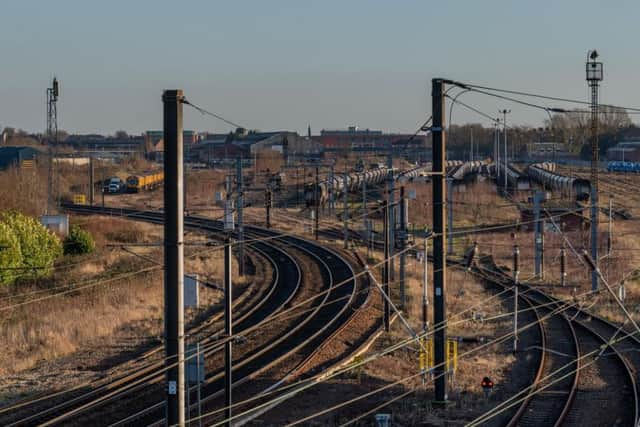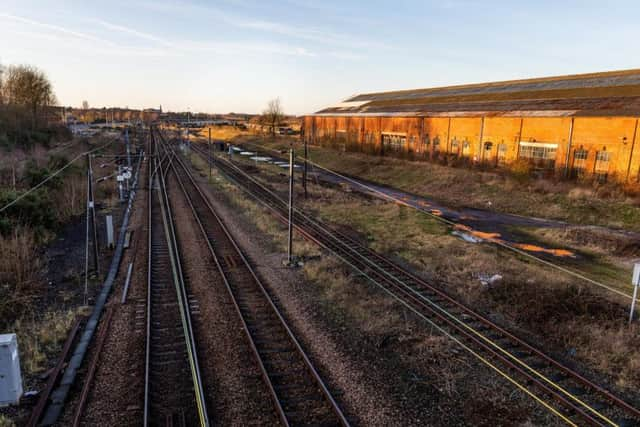This is the industrial site in York where the new House of Lords could be built
The government is believed to be considering building a new chamber for the Lords at the York Central site, to the west of York Station.
The 'underused' railway sidings are part of one of the largest urban brownfield regeneration sites in the country. It's effectively an 'island' as the development will still be surrounded on all sides by operational railway lines.
Advertisement
Hide AdAdvertisement
Hide AdPeers claim Boris Johnson is 'living in cloud cuckoo land' with plans for House of Lords in YorkCurrently, the main access points to the area are the Wilton Rise footbridge, the Leeman Road underpass and the Marble Arch tunnel, plus the western exit from the station.


The government already has a stake in the site through the Homes England agency, and they've designated the 45 hectares of land as a Housing Zone. York Central also has Enterprise Zone status, meaning that commercial occupiers will receive business rates incentives for taking on units within the development.
The masterplan is to create a series of new residential and business quarters with improved access to the station. There will be 2,500 new homes, 112,000-sq.m of office space and it's expected that the area will support over 6,500 'high value' jobs in sectors such as finance and rail technology.
As access for cyclists and pedestrians is currently inadequate, a series of new footpaths and cycleways will be built. Although the development has been planned to accommodate only 'low-level' car use, opponents have raised concerns about a new traffic flow route through York Central to the Leeman Road tunnel that is likely to be used by commuters.
Advertisement
Hide AdAdvertisement
Hide AdThe other stakeholders are Network Rail, City of York Council and the National Railway Museum, whose own expansion plans will complement the development of the surrounding land. The museum is intended to act as a cultural focal point for the new neighbourhood.


Planning permission was granted in March 2019 and work began on road access schemes in the area later last year. It could take up to 20 years for the whole development to be completed.
The Sunday Times revealed yesterday that the prime minister intends to move the House of Lords permanently to York, and that the York Central site had been identified as the ideal location for a purpose-built second chamber.
The 800 peers who sit in the Lords would face a three-hour train journey from London to attend sessions, although the building would likely be a just a short walk from York Station.
Advertisement
Hide AdAdvertisement
Hide AdYork is believed to have been chosen for its transport links and its historic status as a seat of power - the city hosted the Council of the North, a kind of devolved parliament, until the Civil War.


A review launched in the spring will determine the final location and there will then be a competition to design the new chamber.
As part of Johnson's plans, the House of Commons will also hold 'touring' sessions in cities outside of London.
The Lords were already due to spend six years sitting in the Queen Elizabeth II Centre from 2025 due to restoration work taking place at the Palace of Westminster, but they are likely to move north instead.
Advertisement
Hide AdAdvertisement
Hide AdThe decision to focus on York was welcomed by council leader Coun Keith Aspden:-
.“Although proposals seem to be in the very early stages of discussion, this is really welcome news. The quality of the York Central site, located next to York Station, is among the best in the north of England and is expected to attract high-quality occupiers.
"City of York Council wants to help and support businesses across the city to grow and be successful, so we welcome this announcement and any conversations and genuine attempts to decentralise the country."
The history of York as a seat of power
Devolving power and political functions to the north is not a new idea - it began back in 1472 when the Council of the North was established.
Advertisement
Hide AdAdvertisement
Hide AdIt was intended as an administrative body and was set up by King Edward IV, the first of the Yorkist kings. Its first president was his brother Richard, who later took the throne himself as King Richard III.
It had no dedicated base during its early years, operating from both Sheriff Hutton Castle and Sandal Castle, and is primary function was to administer Crown justice in the days when the monarch's rule was absolute.
It was re-established under King Henry VII after the death of Richard and his heirs in 1489, and led by his son Arthur. After Arthur died, it met sporadically and only dealt with urgent matters. The king's mother, Margaret Beaufort, handled the running of the northern lands.
It was once again re-established in 1537, this time by King Henry VIII, as a reaction to resistance to the English Reformation, which had seen monasteries dissolved and Catholics persecuted.
Advertisement
Hide AdAdvertisement
Hide AdThe north was an area of staunch Catholic support and an uprising called the Pilgrimage of Grace took place in York. The rebel leaders were promised their own parliament, and the Council reconvened under the presidency of Robert Holgate. There were four annual sessions in York, Durham, Newcastle and Hull.
Two years later, the Council was awarded permanent headquarters after the dissolution of St Mary's Abbey in York - the former abbot's house, which today is called King's Manor. It is owned by the University of York and parts of the building are open to the public.
By the 1600s, however, its power had waned. The Council was no longer seen as a body which would loyally support royal decree - instead it was considered a potential hive of rebellion. In 1641 it was formally abolished due to fears that its members had Catholic sympathies.